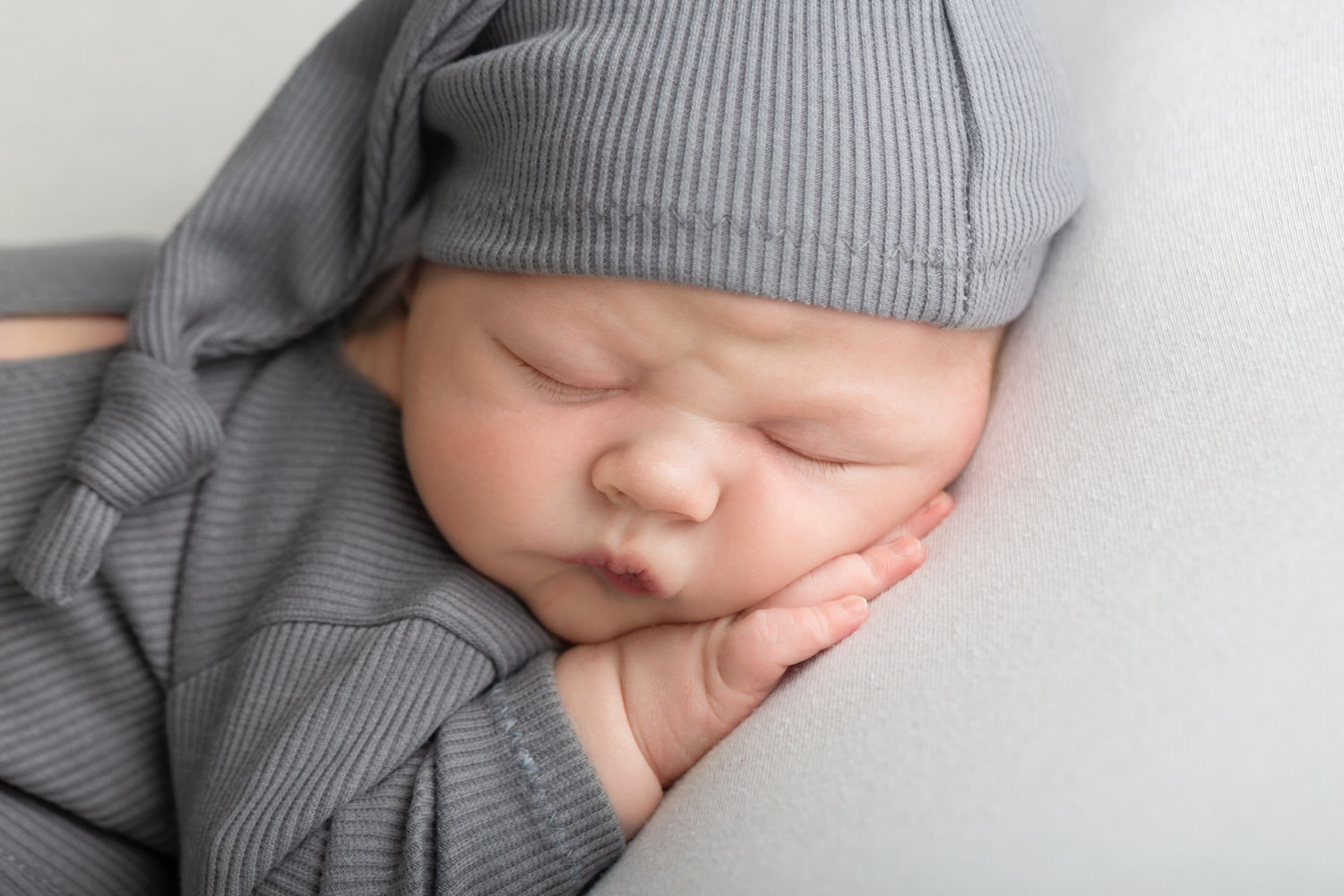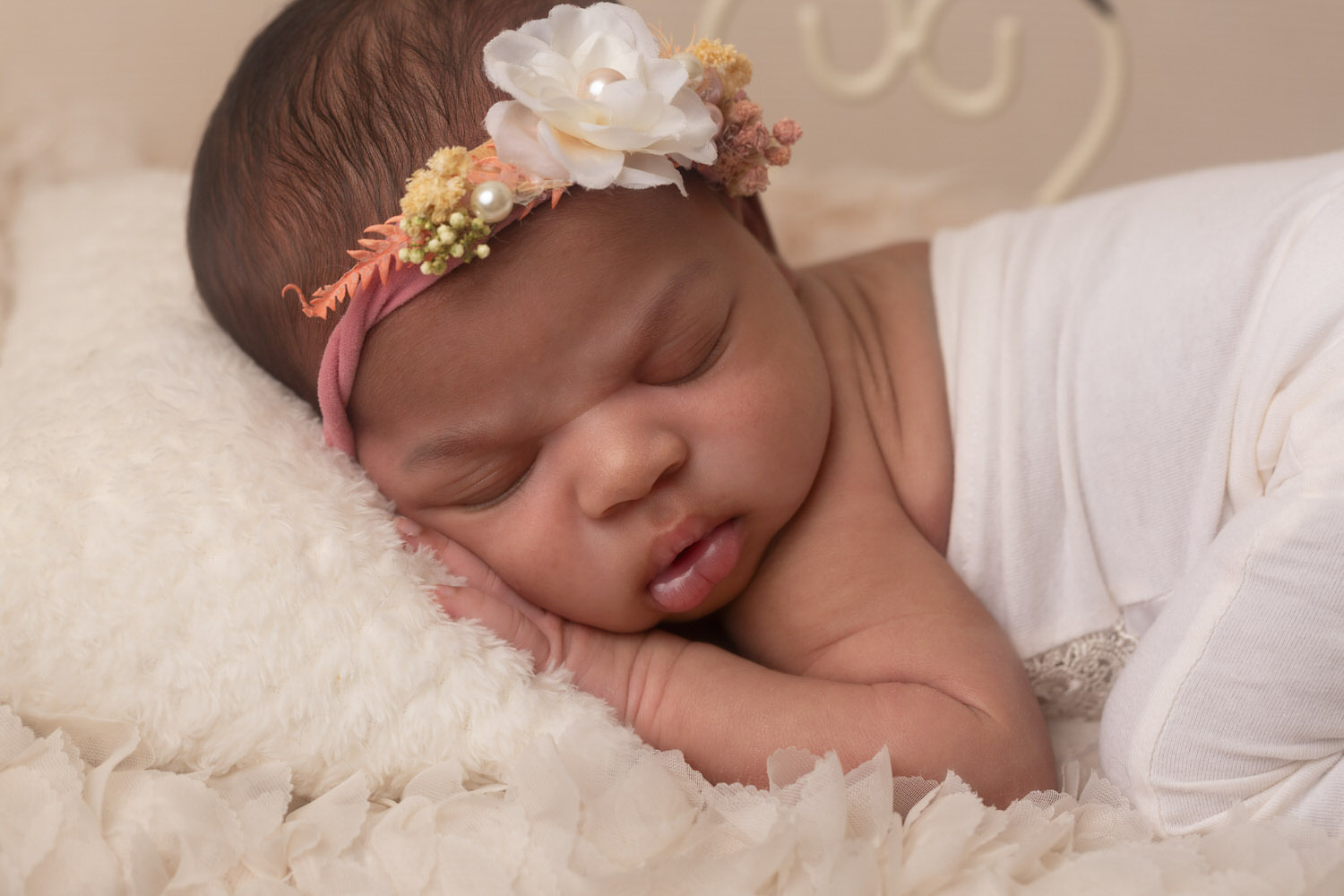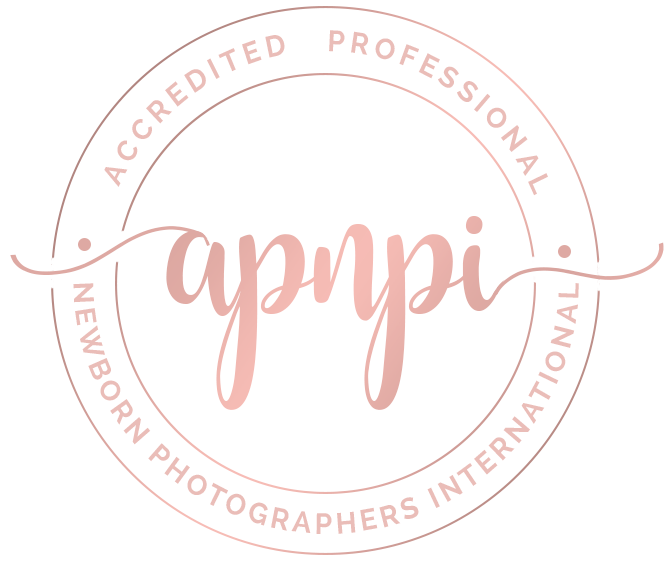
Studio lighting for newborn photographers
Written by: Katherine Katsenis

One of the most common questions I get besides “What camera is good for newborn photography?” is, “What light should I get?”. And “What modifier should I use”? I remember what it is like to be at the beginning of my newborn photography career. You want to get started, but are not sure where to begin. In this blog, I want to talk about studio lighting for newborn photographers so you can get going and move ahead with your dreams.
Natural Light
Natural light can be a great thing. If you are in a situation where it is kind to you, or you are easily able to manipulate it, natural light makes life easier. In my experience, however, natural light is usually not optimal for an entire newborn session. This is because you may not be able to use natural light for all situations; from family, to siblings, to posing bag, to props. Each of these requires different amounts and types of lighting. If you have a situation with huge floor to ceiling windows and enough room to place a V flat or foam core as a reflector, then natural lighting may work for you all the time. Natural light, you’re like that friend who’s sometimes amazing to hang out with but then can suddenly become a bit unreliable. It can change a lot very quickly. Newborn photography is tough enough without you having to worry about what the light outside is doing.
So, what’s a newborn photographer to do when the sun decides to go on a break, or it’s just too gloomy outside? That’s where our trusty friend, the monolight, steps in. It’s like having a sunshine buddy on call, ready to brighten up your photo sessions with just the right amount of light. No more fretting over cloudy days or racing against the moving sun. Monolights are here to save the day, giving you consistent, beautiful light you control.
Studio light – Monolights
One of the easiest studio lighting for newborn photographers is the monolight. Think of watt seconds as your guide to how much light your monolight can dish out. It’s a bit like deciding how much frosting goes on a cupcake. Too little and it’s just a muffin, too much and it’s a sugar bomb. For newborn photography, you want just the right amount of frosting — I mean, light! This helps keep the photo soft and sweet, just like your little subject.
So, when you’re out there picking your monolight, keep an eye on those watt seconds. Not too high, not too low. 1000 ws is probably too much. 500 ws is more in the neighborhood of what you need. This way, you can take images of just the baby, the baby and siblings, and whole family photos and you will be able to adjust the power setting on the strobe to get the lighting look you want.

Popular Studio Monolights for Newborn Photographers
A lot has changed in monolights since I began my newborn photography business. But the basics are still the same.
You need to be able to adjust the power
This can be done manually at the back of the strobe, or in some cases, wirelessly through the trigger in your hotshoe. I am a bit of a fossil and my strobes plug in to the wall and can only be changed manually. But if I had to change, I would love to be able to adjust the light remotely. Very convenient.
Consider Recycle Time
Newer and mid to higher priced strobes have faster recycling times. This means that your strobe can fire at the power you set quickly. If you can afford it, fast recycle times can help you get those fleeting newborn smiles.
Consider battery powered
Battery packs are awesome. It is just one less cord you have to deal with and it makes it easy to go inside or out depending on where you are doing your newborn session. I do recommend buying an extra battery pack so you have one on standby at all times.

Popular Strobes in the Newborn Photography World
Paul Buff’s Einstein
This is an affordable, reliable strobe. Buff also sells modifiers for it that are effective and easy on your pocket book
Flashpoint (Godox) Xplor 600
This strobe has a battery, which is great if you travel, or need to move your light around. It has one trigger (be sure you buy it as it is not included with the strobe). This strobe has good recycle times at lower powers when you need to get 3 or 4 quick shots in a row.
Profoto D3
If you have money to burn, Profoto is for you and will be your dream studio lighting for newborn photography. But what do you get for all that extra bank? Mostly, it is small things that may not matter to you. For one, faster recycling time at higher powers. For another, more consistent color. Less expensive strobes do tend to vary a little bit in color over a long session. Pro Foto does this less. But these variations are very small and you can adjust those images in post production.
Buying Used
There are many options out there in the world of monolights. When I was new, I was lucky to have a mentor who could answer questions. This allowed me to be able to buy used gear with confidence because he always told me what to look for. If you can, buying used can save you a small fortune. Many reputable places like B and H Photo and Adorama sell used gear. They have good customer support and you can ask questions. It is something to consider when just starting. Aferall, you also have to buy newborn clothes, posing fabrics, headbands and props.
Types of Common Light Modifiers for Newborn Photography
Once you have your strobe, you will need a modifier or two. Check out these commonly used ones.
Shoot Through Umbrella
This is a large white umbrella that fits into your monolight. You shoot light through it for soft diffused shadows.
Shoot Into Umbrella
If you have an umbrella that is black outside and white or silver inside, then you can shoot light into the umbrella and it bounces back to light your subject. For this, I recommend also using diffusion material for the light to bounce back through.
Soft Box
To use a softbox, you will have to know what kind of mount your monolight has. Softboxes use what is called a speeding to attach the softbox to the light. Many take a Bowens Mount. Some are proprietary and only use their own brand. If you need to, you can get an adapter so that the soft box you want will fit properly on your monolight. For newborns, you want a large softbox. I have a 4 x 6 that I use.


Invaluable Lighting Grip Gear
Get ready to meet the unsung heroes of your newborn photography set-up: grip gear! Think of grip gear like the trusty sidekick who’s always got your back. It’s the Robin to your Batman in the world of lighting and photography. These handy dandy gadgets, like light stands, boom arms, and sandbags, are all about giving your lighting that extra oomph and stability.
Light Stand
While you can use just a basic light stand, it has its drawbacks. Most light stands only go so low to the ground. This means that your modifier only goes so low too. This matters for shots where the baby is in a prop on the floor, or for those overhead family images.
I recommend a light stand with a sliding arm and wheels so you can maneuver around your environment and get the light you want.
Sandbags
But wait, there’s more! Don’t forget about the sandbags. They might not sound glamorous, but they’re the unsung heroes that keep everything from tipping over. A little like the weights that keep a hot air balloon from flying away. They make sure your light stands stay put, even if you accidentally bump into them while tiptoeing around to get that perfect angle.
Take Your Time and Have Fun
There is a lot more I could say, but the point here is to get you started. Once on your way, you will decide for yourself the exact lighting gear that is good for you. Creating your own style takes time. It is only through trial, error and experience that you come to know who you are as an artist. The answer to “What is the best light for newborn photography?” is not static, but hopefully you’ve learned enough about studio lighting gear and modifiers for newborn photographers to get going from the base beginning point which I have given here. But your answer to this question will evolve.
So, get out there. Get started. Before you know it, you will be writing a blog post for APNPI!


